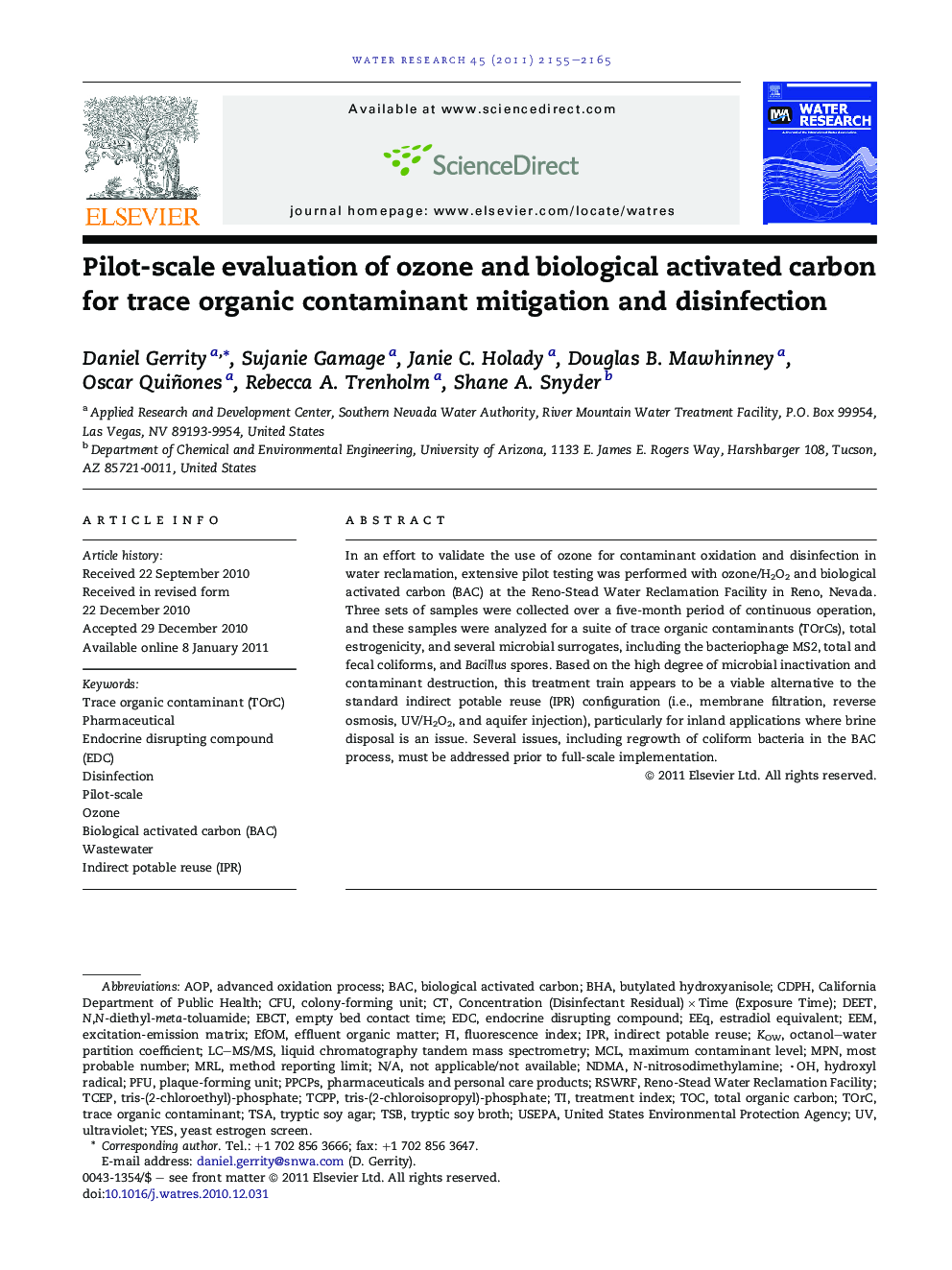| Article ID | Journal | Published Year | Pages | File Type |
|---|---|---|---|---|
| 4483229 | Water Research | 2011 | 11 Pages |
In an effort to validate the use of ozone for contaminant oxidation and disinfection in water reclamation, extensive pilot testing was performed with ozone/H2O2 and biological activated carbon (BAC) at the Reno-Stead Water Reclamation Facility in Reno, Nevada. Three sets of samples were collected over a five-month period of continuous operation, and these samples were analyzed for a suite of trace organic contaminants (TOrCs), total estrogenicity, and several microbial surrogates, including the bacteriophage MS2, total and fecal coliforms, and Bacillus spores. Based on the high degree of microbial inactivation and contaminant destruction, this treatment train appears to be a viable alternative to the standard indirect potable reuse (IPR) configuration (i.e., membrane filtration, reverse osmosis, UV/H2O2, and aquifer injection), particularly for inland applications where brine disposal is an issue. Several issues, including regrowth of coliform bacteria in the BAC process, must be addressed prior to full-scale implementation.
Research highlights► This study identifies a viable indirect potable reuse treatment train. ► The ozone and BAC processes were effective in reducing TOrC concentrations. ► The ozone process was generally effective for microbial inactivation. ► Downstream UV disinfection may be necessary to mitigate regrowth in the BAC. ► The matrix loses its wastewater “identity” as it flows through the treatment train.
